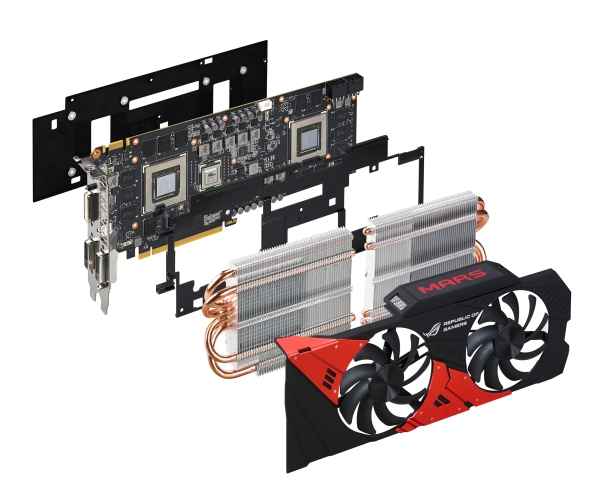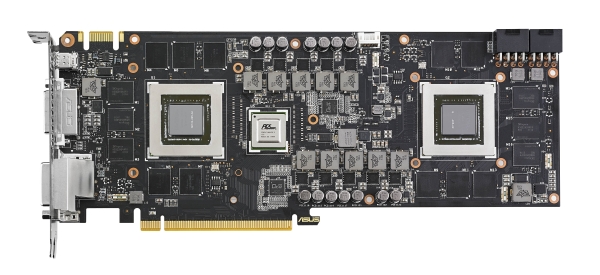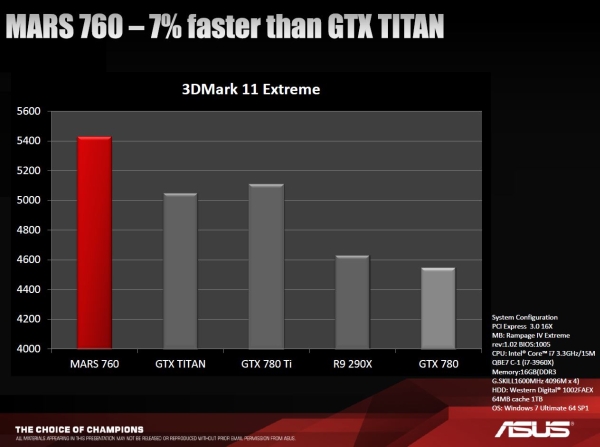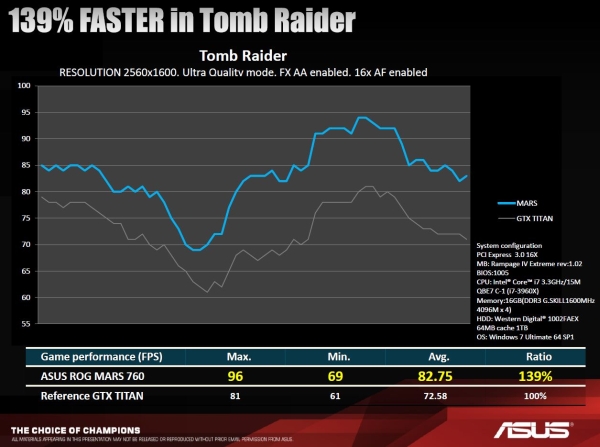ASUS has launched a new member of the Mars lineup, under its Republic of Gamers brand and line of premium products, the ASUS ROG Mars 760. Although it is not the Mars everyone expected, the new ROG Mars 760 still packs enough punch to be faster than the mighty Nvidia GTX Titan.
Based on two GK 104 GPUs with 1152 CUDA cores per GPU for a total of 2304, the new ROG Mars 760 is basically an GTX 760 SLI setup done on a single PCB. These specifications, paired up with the fact that both GPUs are clocked at 1006MHz base and 1072MHz Boost GPU clocks, 4GB of GDDR5 memory (2GB per GPU) clocked at 6000MHz and dual 256-bit memory interface, were enough to make it faster than the GTX Titan and in some cases even faster than the GTX 780 Ti. The GPUs are interconnected via the PLX PEX8747 PCI-Express 3.0 bridge.
With an impressive 12-phase DIGI+ VRM, Super Allow Power components and (Nichicon GT-series) Black Metallic Caps, the new ROG Mars 760 will also offer good stability as well as an enhanced OC potential. The new ROG Mars 760 is paired up with a dual-slot DirectCU II cooler with two separate heatsinks (one for each GPU), two fans which should keep it well cooled even under load and glowing MARS LED logo.
It supports SLI, in case you want to run a pair for Quad-SLI configuration, has two dual-link DVI-I outputs, one dual-link DVI-D output, one Mini DisplayPort output and HDMI output via dongle.
According to ASUS, and unlike previous ROG Mars products, the Mars 760 will not be a limited run 1000-pieces piece of hardware, but rather a normal graphics card aiming to bring Mars down to a much reasonable levels when it comes to price and affordability. Unfortunately, ASUS still did not release any details regarding the actual price or the availability date.









